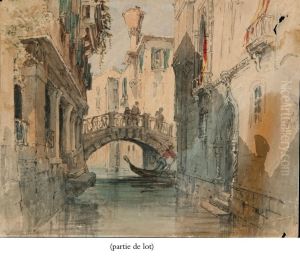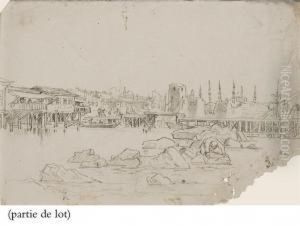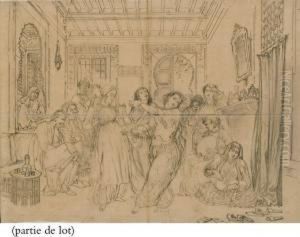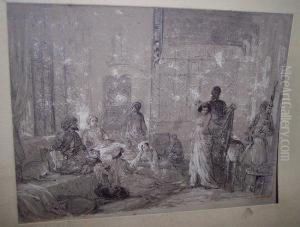Aloysius Amadeus Preziosi Paintings
Aloysius Amadeus Preziosi, born in 1816 in Malta, was a notable painter known for his watercolors and prints of the Near East and the Balkans. Preziosi came from a noble and affluent background; his father was a judge which allowed him to receive a privileged education. He initially studied law to follow in his father's footsteps, but his passion for art led him to abandon his legal studies in favor of pursuing a career as an artist.
Preziosi traveled extensively throughout his life, which greatly influenced his work. He left Malta for Rome in 1836, where he studied painting before moving to Paris in 1842 to continue his art education. His travels took him to various parts of Europe, including a significant amount of time in Istanbul, which became a central subject of his work.
Istanbul, at the time, was the capital of the Ottoman Empire, and Preziosi captured the vibrant daily life of the city with its diverse population and cultural richness. His detailed and colorful illustrations of Istanbul and its inhabitants provide an invaluable record of the city during the 19th century. He gained significant attention for his works, with his paintings being sought after by foreign diplomats and visitors who wanted to take home a piece of the exotic East.
Preziosi's watercolors and prints are characterized by their vivid portrayal of street scenes, landscapes, and genre scenes. He had a keen eye for detail and was able to capture the atmosphere and architecture of the places he visited with remarkable accuracy and sensitivity. His work was not just picturesque but also ethnographic, as it documented the attire, occupations, and customs of the local people.
Unfortunately, Preziosi's life came to a tragic end in 1882 when he was accidentally shot and killed in Constantinople, the city that had inspired so much of his art. Despite his untimely death, Preziosi left behind a vast body of work that continues to be appreciated for its historical and artistic value. His paintings can be found in various museum collections and continue to be studied and admired for their contribution to Orientalist art.



